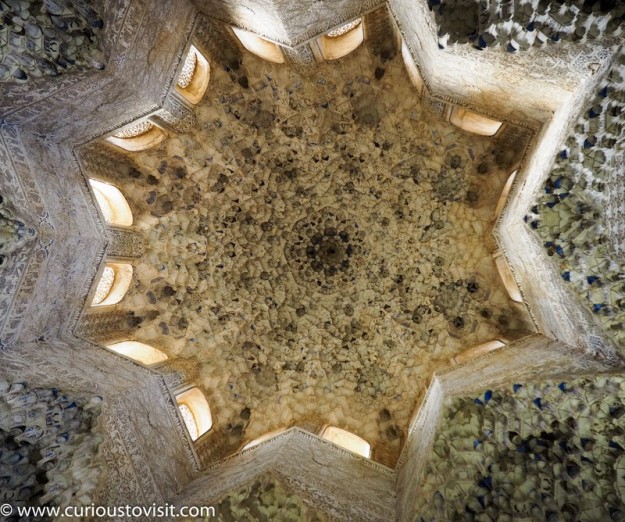
Alhambra, a famed exotic medieval fortress-city is a place, where the curious visitor gets a glimpse into the 700-year rule of Moorish Muslims over Spain and particularly Andalusia and Granada.
Tour guides tell us that when most of Europe was slumbering during the dark Middle Ages, Spain under the Moorish rule was a cradle of learning and inventions with flourishing centres for mathematics, astronomy, literature and architecture.
Alhambra was one of them.
As most Medieval castles, Alhambra was at first a small fortress which grew in significance as the Reconquista by Spanish Christians pushed the Moors down south to Andalusia.
The famed Nasrid palaces and Generalife we most admire today were built towards the end of the Muslim rule in Spain when it was reduced to Nasrid Emirate of Granada.
The architectural achievements of the Alhambra rulers are really impressive when we consider the fact that due to ongoing wars, the Emirate never enjoyed stable economic conditions and all the materials – wood, clay and plaster – for the building of the fortress and palaces were found locally.
As we enter the Nasrid Palaces, one thing is evident – its architecture is made up of text, mostly poems and verses of praise from the Quran.
Plaster was widely used in creating these sophisticated decorative motives with, as some would argue, no parallel in the world of architecture.
It seems that here religion seamlessly intertwined with the everyday existence of palace residents.
The religious message of ceremonial cleanliness as well as engineers’ ability is also evident in the palace’s elaborate piping system, baths and water fountains, standing in stark contrast to the rest of Medieval Europe where bathing was frowned upon by the church due to its association with sexual immorality and widely believed to cause ill health.
Alhambra with its exotic European Islamic architecture, which is unique in its style with no Byzantine influence, is truly a mythical place conjuring up memories of fairy-tales once read and driving imagination to the mysterious world of Moorish Spain.
The change of political and religious system is reflected in Alhambra’s architecture, where the new Christian rulers left their mark by constructing churches on top of mosques as well as Palace of Charles V in Renaissance style near the Nasrid Palaces.
We, future generations, are really lucky that in 1492 the fortress was handed over to the mighty Catholic rulers peacefully, thus preserving the elaborate structures and décor intact.
On a final note
- This was my second visit to the mythical palace, and this time – successful. The first time my friend and I were optimistic enough to think that we can get in without advance booking… wrong… we couldn’t. So for all you optimists out there – book your tickets in advance! You can book here.
- If you want to see the whole Alhambra and not only Nasrid Palace, arrive either first thing in the morning or as early as possible after lunch break, this is because the place is huge and really interesting, especially if you are a history, architecture, archaeology or art enthusiast – you’ll certainly want to explore every corner and soak up the atmosphere.












 Hi, I am Vytenė, a travel blogger originally from Lithuania. Highlighting here European destinations worth exploring. You don’t have to go far to have the time of your life!
Hi, I am Vytenė, a travel blogger originally from Lithuania. Highlighting here European destinations worth exploring. You don’t have to go far to have the time of your life!
